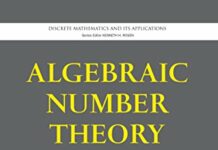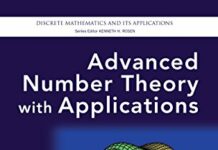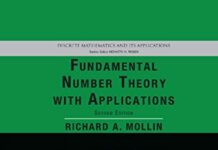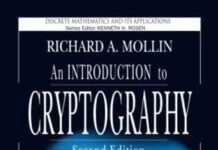
Ebook Info
- Published: 2011
- Number of pages: 442 pages
- Format: PDF
- File Size: 1.07 MB
- Authors: Richard A. Mollin
Description
Bringing the material up to date to reflect modern applications, Algebraic Number Theory, Second Edition has been completely rewritten and reorganized to incorporate a new style, methodology, and presentation. This edition focuses on integral domains, ideals, and unique factorization in the first chapter; field extensions in the second chapter; and class groups in the third chapter. Applications are now collected in chapter four and at the end of chapter five, where primality testing is highlighted as an application of the Kronecker–Weber theorem. In chapter five, the sections on ideal decomposition in number fields have been more evenly distributed. The final chapter continues to cover reciprocity laws.New to the Second EditionReorganization of all chaptersMore complete and involved treatment of Galois theoryA study of binary quadratic forms and a comparison of the ideal and form class groupsMore comprehensive section on Pollard’s cubic factoring algorithmMore detailed explanations of proofs, with less reliance on exercises, to provide a sound understanding of challenging materialThe book includes mini-biographies of notable mathematicians, convenient cross-referencing, a comprehensive index, and numerous exercises. The appendices present an overview of all the concepts used in the main text, an overview of sequences and series, the Greek alphabet with English transliteration, and a table of Latin phrases and their English equivalents.Suitable for a one-semester course, this accessible, self-contained text offers broad, in-depth coverage of numerous applications. Readers are lead at a measured pace through the topics to enable a clear understanding of the pinnacles of algebraic number theory.
User’s Reviews
Editorial Reviews: Review This is an introductory text in algebraic number theory that has good coverage … . This second edition is completely reorganized and rewritten from the first edition. … Very Good Features: (1) The applications are not limited to Diophantine equations, as in many books, but cover a wide range, including factorization into primes, primality testing, and the higher reciprocity laws. (2) The book has a large number of mini-biographies of the number theorists whose work is being discussed. … ―MAA Reviews, April 2011This book is in the MAA’s basic library list. The Basic Library List Committee considers this book essential for undergraduate mathematics libraries.Praise for the First EditionThis is a remarkable book that will be a valuable reference for many people, including me. The book shows great care in preparation, and the ample details and motivation will be appreciated by lots of students. The solid punches at the end of each chapter will be appreciated by everybody. It deserves success with many adoptions as a text. ―Irving Kaplansky, Mathematical Sciences Research Institute, Berkeley, California, USAAn extremely well-written and clear presentation of algebraic number theory suitable for beginning graduate students. The many exercises, applications, and references are a very valuable feature of the book.―Kenneth Williams, Carleton University, Ottawa, Ontario, CanadaThis is a unique book that will be influential.―John Brillhart, University of Arizona, Tucson, USA About the Author Richard A. Mollin is a professor in the Department of Mathematics and Statistics at the University of Calgary. In the past twenty-five years, Dr. Mollin has founded the Canadian Number Theory Association and has been awarded six Killam Resident Fellowships. He has written more than 200 publications, including Advanced Number Theory with Applications (CRC Press, August 2009), Fundamental Number Theory with Applications, Second Edition (CRC Press, February 2008), An Introduction to Cryptography, Second Edition (CRC Press, September 2006), Codes: The Guide to Secrecy from Ancient to Modern Times (CRC Press, May 2005), and RSA and Public-Key Cryptography (CRC Press, November 2002).
Reviews from Amazon users which were colected at the time this book was published on the website:
⭐I used this book in a one on one course in algebraic number theory in my fourth year of college. We finished just before ramification.My background at the time included a year of undergraduate linear algebra, a year of undergraduate abstract algebra, a semester of intro. graduate algebra, intro. Galois theory, and intro. commutative algebra. The only things I used were Galois theory, my second abstract algebra course, and my second linear algebra course. Commutative algebra helped, but wasn’t necessary in that abstract setting.Organization: The book is very well organized with helpful appendices on abstract algebra basics (Groups, Rings, Fields) and Galois theory. The first chapter is slow-paced and provides a strong historical background for the material. A reviewer below suggested that there were “logical leaps” in the text–I never found such stuff, and I am always very picky about details. The author uses easy propositions that are assigned for homework sometimes, but they’re mostly straightforward.Exercises: They range from straightforward to quite thought-invoking… I remember one in particular, a starred problem, in which I had to use three “tricks” to solve.Content: I like this book a lot. It’s not super abstract on the level of Lang, but has hints of great generality throughout, and it’s not some trivial algebraic number theory full of history, anecdotes, useless junk book with “Fermat’s Last Theorem” misleadingly stated in the title somewhere. This book has a lot of stuff on applications to cryptography. The book covers things including- Euclidean domains and unique factorization,- special cases of FLT,- Dirichlet’s Unit Theorem,- geometry of numbers,- ideal class group,- ramification,- basics of class field theory,- reciprocity laws.It’s a really nice all-around introduction. You need to be mature enough to read this book–the problems require that the reader is familiar with the relevent math. I was really impressed with the organization of this book–with topics like these, it’s hard to have a nice balance of generality with concrete and useful results. This is for people not ready to appreciate Lang’s book.
⭐I am a graduate student specializing in Ring Theory and I have to tell you this is the absolute worst book I have ever had. Not only does the author make these humongous jumps in each section, he also has massive logical gaps. There are plenty of errors in the text starting right from the first section. You could easily spend a whole year deciphering (with a massive headache) the first chapter. The author is definetly wrong in assuming that all you need is a basic undergraduate number theory class and basic abstract algebra. You could have 2 comprehensive years of graduate modern algebra and still not be ready for the massive logical gaps in the book. Sure if we were all Galois and Eulers, the book would be easier, but I’d bet they’d even be scratching their heads often enough. My advice is stay away from the text at all cost. You’ll regret paying the outrageous price for a text that is worth firepaper.
⭐
Keywords
Free Download Algebraic Number Theory (Discrete Mathematics and Its Applications) 2nd Edition in PDF format
Algebraic Number Theory (Discrete Mathematics and Its Applications) 2nd Edition PDF Free Download
Download Algebraic Number Theory (Discrete Mathematics and Its Applications) 2nd Edition 2011 PDF Free
Algebraic Number Theory (Discrete Mathematics and Its Applications) 2nd Edition 2011 PDF Free Download
Download Algebraic Number Theory (Discrete Mathematics and Its Applications) 2nd Edition PDF
Free Download Ebook Algebraic Number Theory (Discrete Mathematics and Its Applications) 2nd Edition




